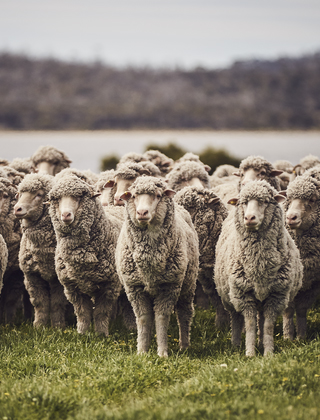World-first study shows ‘use phase’ of a garment is critical to determining its environmental footprint

A ground-breaking new study that examined the environmental footprint of a wool garment shows that to fully understand the eco-credentials of a garment, it is crucial that its whole lifespan be considered, especially the time after the consumer has purchased it – which is good news for wool because wool garments tend to be used and kept for longer.
Life Cycle Assessment measures the environmental impact of a product across its entire lifespan, from cradle to grave. The ‘use phase’ is critical because the more often a garment is worn, the less overall environmental footprint it will have.
A ground-breaking new study that examined the environmental footprint of a wool garment shows that to fully understand the eco-credentials of a garment, it is crucial that its whole lifespan be considered, especially the time after the consumer has purchased it – which is good news for wool because wool garments tend to be used and kept for longer.
Wool apparel is produced in long supply chains, from the production of greasy wool on sheep farms, through processing to garment make-up, retail, consumer use, and end-of-life. Up until now, studies in Life Cycle Assessment (LCA) have focused on just particular segments of the supply chain.
However, a world-first new study funded by AWI provides a full cradle-to-grave LCA for the supply chain of a Merino wool jumper. This is the first full LCA of a textile fibre to be published in a peer-reviewed journal. It reports on the environmental impacts of a lightweight Merino wool jumper made from <20μm Australian wool, processed in China and sold and worn in the EU.
The study helps demonstrate the eco-credentials of wool in a world where there is increasing concern about society's trend towards ‘fast fashion’ and disposable clothing, and the effect on the environment of synthetic textiles.
AWI Program Manager for Fibre Advocacy and Eco Credentials, Angus Ireland, says the study demonstrates that consideration of the length of time a garment stays in active use is critical in LCA as it strongly affects the garment’s overall environmental impact.
“Consumers who are aware that their wool clothes require less washing – because of wool’s natural resistance to odour, stains and wrinkles – have the greatest influence on the sustainability of their garments by maximising their active lifespan,” Angus said.
“The fact that wool clothes need less frequent washing not only reduces energy and water consumption, it also preserves the as-new look of the garment, enabling consumers to continue wearing it for longer.
“The length of a garment’s lifespan, that is the number of times that the garment was worn, is the most influential factor in determining a garment’s footprint on the planet.”
Angus Ireland, AWI Program Manager for Fibre Advocacy and Eco Credentials
“The impact on the environment is further reduced by a longer lifespan because the garment has to be replaced less often. This is good news for wool because woollen garments are on average kept for longer periods of time than garments made from other fibre types, plus they are more likely to be recycled.”
The study also found that there are ways to improve the efficiency of production, processing, and garment care, which could also reduce the environmental impacts from wool.
“This is an opportunity for wool as it helps AWI to identify and focus our efforts on environmental ‘hot spots’ (such as the on-farm production of greenhouse gases – see page 9) that will most effectively reduce wool’s footprint,” Angus added.
More information: Access the AWI-funded study ‘Environmental impacts associated with the production, use, and end-of-life of a woollen garment’ published in The International Journal of Life Cycle Assessment at www.rdcu.be/b4oXW.
This article appeared in the September 2020 edition of AWI’s Beyond the Bale magazine. Reproduction of the article is encouraged, however prior permission must be obtained from the Editor.














